Trevor Von Eeden speaks out on 40 years in the industry

CCN is very proud to present a personal and rather extensive interview with a legendary creator whose work continues to evolve to this day. He has adapted with the times including starting a Kickstarter campaign for the Hard Code II with Ramon Gil. Trevor Von Eeden is a voice we have all enjoyed, and today he gives voice to that which has remained unsaid for many a decade…
Ramon Gil: Can you tell us what interested you in comics in the first place and how you started working in the comic book industry?
Trevor Von Eeden: I’ve always been fascinated by the few American comics I’d managed to get my hands on while growing up in Guyana, South America (I came to the States with my family in ‘70, when I was 11)—especially because there was no TV there, and the rare movie that I’d see with my family was good for one admission only. If you’d missed the beginning of the flick, there was no sitting through it again for free!
The closest thing to comics were the strips in the daily newspapers (of which I remember the very funny Andy Capp, Lee Falk’s The Phantom, and Dr. Kildare, by Ken Bald—the epitome of realistic drawing for me, at the time.) The first comics I remember reading were Kirby/Lee extravaganzas, like Thor, The Avengers, Sgt. Fury and his Howling Commandos, and the Rawhide Kid. I’d also managed to read some of the Harvey’s, like Casper the Friendly Ghost, Wendy the Good Witch, Jumbo the Little Giant, Richie Rich, and even Little Dot. I may’ve even come across a few Archie comics, Disney’s, and Dennis the Menace—but that might’ve been after I’d finally come to the States…
Comics were a wonderful, colorful world of fun and escape for me, and since I’ve always enjoyed reading (my first great love), I’d devour both words and pictures with immense delight. It was almost impossible to believe that those fun little booklets were actually created by grown, adult human beings—real people, just like myself! I thought at the time that they must’ve been some pretty wonderful folks to actually be around—much less BE! I knew that the people I saw on the big screen at the movies were just actors, playing a part in whatever scenario, comic, tragic, or dramatic, that was being enacted—but the people who actually wrote and drew comic books (and the newspaper strips) seemed to be able to create their colorful, entertaining, wonderfully larger than life fantasies completely by themselves—with just an ordinary, blank piece of paper to start with! The whole experience of discovering and reading comics was a truly magical one to my young, impressionable 8 year old mind. A feeling that lasted well into the next few decades, all the way into my young adulthood, and beyond! But I’m jumping ahead of myself a bit here…
Besides being a wonderful stimulant to my mind, and creative imagination, comics also stimulated my desire to draw (moreso than write—my literary tastes ran more to the classics that I’d been exposed to in my classes at school.) Drawing was originally inspired by the visions in my head put there by the many books I’d read—the best writing is the most visually inspired, I believe—and my desire to see on paper what I’d only seen inside of my head. That childhood pastime grew into a full-fledged mania, bordering on obsession, by the time I’d arrived in the U.S., and been exposed to the vast universe of American comics contained in the expansive collections of my best friends in Junior High, and High School—Perry Perez, and Albert Simonson. I spent the majority of my time in classes after that doodling and practicing drawing in the margins of my notebooks (faces and figures were fun—hands, and especially feet, the most difficult.) I’ve always loved the hugely imaginative fantasy, and unabashedly exaggerated, larger-than-life sensibilities and adventures that I found in the comics pages (no coincidence that my first comics were Kirby/Lee productions!) I devoured any and all of ’em that I could get my insatiably greedy hands and eyes on.
I got the chance to actually live the dream of being a comics artist myself when one of my best friends, Al Simonson, sent some of my ballpoint drawings to DC for a critique—and a form letter returned, with a handwritten note to “drop by if you’re ever in the neighborhood” at the bottom. Two seconds later (just kidding…it was actually five… 🙂 I appeared at the Midtown Manhattan reception desk of the DC Comics offices, which were conveniently 45 minutes away by subway, from my home in the Bronx (back in those pre-9/11 days, anyone would just walk into DC Comics, right off the streets.) They noticed the color of my skin, along with the quality of my 16 year old scribblings, and decided to have me pencil the adventures of their first ever original black super-hero, Black Lightning—
coincidentally then in the works. I eventually received co-creator credit for co-designing BL’s original costume (along with editor Jack C. Harris, and Tony Isabella—who had initially created the character, and his powers) along with drawing the first 11 issues of his debut series. So at 16, going on 17 (as the song goes) I became DC Comics first black artist, as well as the youngest they’d ever hired (don’t know if that record’s still existent today), with co-creator credit for their first black super-hero on my resume, to boot! For the record, the black GL knock-off John Stewart had debuted a short time previously—but Black Lightning was DC Comics’ first original black super-hero—and the first to have his own book/title. I’d just started my freshman year at Columbia University after graduating from Brooklyn Tech H.S., and the DC management eventually called me into their offices, to tell me pointedly that they’d like me to quit school, and work full-time for them. Needless to say, this was not a prospect at all unpleasant to me, so I officially withdrew from Columbia U. (with an offer to return at any time) and devoted my energies whole-heartedly to my exciting new venture in life. Btw, over two decades later, in 2003, I did indeed return to Columbia, in order to take a few classes I thought would help hone my skills in writing my first book, “The Original Johnson”
(the story of the first black heavyweight champion of the world, the great and immortal Jack Johnson)—and after discovering that I’d originally left the ol’ Alma Mater in order to secure a bit of comics history by becoming DC’s first black artist, their youngest ever, and co-creator of their first black super-hero, the faculty decided to grant me a partial scholarship—so you can truly say that Black Lightning, secret identity: schoolteacher, literally helped me go through college! Nice bit of poetic justice, that.
I’ve always loved teachers, btw. The ones I’ve known have helped me greatly in life, and I consider their somewhat under appreciated, and often underpaid profession to be one of the noblest endeavors to which any human being could aspire. Where would any of us be, were it not for someone sharing their knowledge, and/or communicating their thoughts to us? Where would any civilization be, without having learned from those who had gone before? Interestingly enough, almost all of my teachers at Columbia in the two years I’d attended classes there—2003 to 2005—were young women, mainly in their thirties (with the sole exception of my Math teacher, Trols Jorgensen. I’d taken math to help me think—to apply its organizational and problem-solving methods to the issues of my daily life and work.) When I was younger, school was always about interacting with the other students there—but upon returning to college in my early 40s, I found the teachers to be infinitely more fascinating than my fellow students (it didn’t hurt that they were all young, fairly attractive women—and my fellow students were, on average, about half my age.) I even asked out my cute Psychology teacher, Ann Senghas, after I’d finished the curriculum I’d enrolled in, and once again withdrawn from Columbia U. in ’05 (with an offer, once again, to return at any time)—but upon discovering on our first date that she’d already had a boyfriend, I never asked her out again. I’m not the type to do to another guy what I wouldn’t want done to myself—and besides, my self-respect simply wouldn’t allow me to share a woman, with anyone. She sure was cute, though… I got TOJ picked up by a publisher less than two months after I’d finished my classes (got the news on my 46th birthday, believe it or not!), and after spending three years writing and drawing it, my first book made its debut on Dec. 23rd, 2009—to subsequent acclaim from both fans, and critics, I’m happy to say. It even sported a New York Times quote on both covers of the 2-volume set! Maybe I’ll take a copy over to Columbia U one day, and see if Ann’s still teaching there (she was about to get her tenure, when last I saw her in ’05) now that she’s come to mind once again. I wonder if she’s still single? And still cute…?
Gee, wouldn’t it be funny if this interview ended up actually benefitting my social life! That’d be a real kick (and not a bad story to relate at some future date—or ON some future date, come to think of it.) Hmmmm.
..
Ramon: What did it feel like, not only becoming a professional DC artist at so young an age, but also being one of the first black artists that they hired?
Trevor: Being DC Comics’s first black artist (not “one of the first”—I was officially THE first) was a HUGE responsibility to me. I took it upon myself not only to wholeheartedly try to produce my very best work, but I also began a very serious and profound study of black people in America—having come from a foreign country (albeit, like America, also a former English colony.) Guyana was also the only English-speaking country in all of South America, and probably the reason for my deep and abiding love for the language. I find English completely fascinating, incredibly versatile, tremendously expressive, yet hugely pliable—with new phrases, expressions, and words being coined incessantly. I’m unfortunately mono-lingual, and although I genuinely envy anyone fluent in more than one language, I must confess that I have absolutely no regrets regarding my love for English. It’s a source of constant joy to me, and one that has yet to diminish, in all of my 57 years on the planet so far. I would someday like to learn another language, if only to better understand the workings of minds raised with an entirely different system of thought, syntax, communication, and symbology—but I nonetheless find the English language perfectly satisfactory for all of my comprehensive, expressive, and communicative needs. I understand and share my own thoughts very easily and quite effectively with it.
Being black in America was initially a source of considerable puzzlement to me (long before becoming DC Comics’ first black artist)—since I’ve always seen myself as what I am, in reality—a light brown-skinned individual. But I soon realized that the term “black” is inherently political—more figuratively and symbolically expressive than truly descriptive. Same as the term white, which in reality, should refer only to albinos—rather than the pink and yellow-complexioned people who’ve so happily co-opted the term over the centuries—and whose politics were profoundly shaped by America’s own shamefully racist past, when the abominable crime against Humanity that was Human Slavery was both the law in the “land of the free”,

Slavery has been a part of the culture since a 17th-century Dutch settlement was established at the southern tip of Manhattan Island
as well as the indispensable basis of its incalculable wealth, and subsequent tremendous power all over the world. Most people unthinkingly accept the definition of racism as being merely one race’s brutality towards another—as so relentlessly demonstrated by America’s own hateful history, in its treatment towards black people—but in truth, the definition of racism is actually a belief in the separation of the ONE Human Race into different, subdivided “races” (with one’s own “race” as the implied “truly human” one.) One becomes a racist simply by believing in—and using—the concept of “race” to define and divide the different PEOPLES of Earth into separate entities. After all, if one believes in Humanity, one is termed a “humanist”, right? So what do you call someone who believes in “race”?…a racist, right?… That, in essence, is the odious nature and legacy of the inherently divisive term—it causes people to unthinkingly and subconsciously create divisions and hierarchies amongst themselves, by accepting and using terms that they’ve never really stopped to consciously define, in their own minds. Substitute the word “people” for the word “race” in any sentence, and you’ll see exactly what I mean.
 I later learned that black people have been deliberately, routinely, repeatedly (and with a sickening regularity) repressed, and constantly kept in the most impoverished and uneducated status all throughout American society, due to the racist politicians, lawmakers, and corporate executives who populated (or more accurately, infected) the U.S. government after the “pro-freedom” North’s insidious, ill-advised union with the pro-slave South, in the period following The Civil War known as Reconstruction. A time which gave birth to the abominable Jim Crow laws, the hate-filled Ku Klux Klan—and every subsequent vile, violent, degenerate, unjust, uncompassionate, totally despicable action and mindset that has plagued America’s black population with astonishing, shameful, and savage brutality in the many generations since. All the unjust incarceration, enforced ignorance, deliberately sub-standard “ghetto-housing” living conditions, job opportunities, and constant social and political disenfranchisement, were the inevitable result of the North’s unholy “deal with the devil” during Reconstruction, and for centuries beyond. These are undeniable facts—but unfortunately, also a status quo, or way of life, so constant and common in its regular implementation that the justified outrage at its truly odious injustices have progressively lessened over the centuries, to the point of the ultimate resignation, and acceptance of “things as they are” that we see today. “It is what it is” is the common, simple-minded saying (one that says absolutely NOTHING) and defeatist phrase that seems to define the mindset of many black people in America today.
I later learned that black people have been deliberately, routinely, repeatedly (and with a sickening regularity) repressed, and constantly kept in the most impoverished and uneducated status all throughout American society, due to the racist politicians, lawmakers, and corporate executives who populated (or more accurately, infected) the U.S. government after the “pro-freedom” North’s insidious, ill-advised union with the pro-slave South, in the period following The Civil War known as Reconstruction. A time which gave birth to the abominable Jim Crow laws, the hate-filled Ku Klux Klan—and every subsequent vile, violent, degenerate, unjust, uncompassionate, totally despicable action and mindset that has plagued America’s black population with astonishing, shameful, and savage brutality in the many generations since. All the unjust incarceration, enforced ignorance, deliberately sub-standard “ghetto-housing” living conditions, job opportunities, and constant social and political disenfranchisement, were the inevitable result of the North’s unholy “deal with the devil” during Reconstruction, and for centuries beyond. These are undeniable facts—but unfortunately, also a status quo, or way of life, so constant and common in its regular implementation that the justified outrage at its truly odious injustices have progressively lessened over the centuries, to the point of the ultimate resignation, and acceptance of “things as they are” that we see today. “It is what it is” is the common, simple-minded saying (one that says absolutely NOTHING) and defeatist phrase that seems to define the mindset of many black people in America today.
But “what is” can ALWAYS be changed into “WHAT SHOULD BE”— and that should never be forgotten!
That’s purportedly the essence of the American spirit, and character, after all—the upholding of basic truths, human and civil rights, in the face of even the most savage and relentless social injustices—isn’t it? These are concepts open to ALL to embrace—and all it takes is understanding, desire, and the will to truly LIVE according to what one believes is RIGHT, regardless of the actions of others. For black, brown, and other non-white people in America, it’s truly difficult, when everywhere you look—in the movies, on TV, billboards, posters, magazines, newspapers, advertisements, and even in comics—all you see predominantly are happy, smiling white faces, ubiquitously staring back at you with a look of proud contentment in their eyes, as if to say “Isn’t THIS, the American way of life, GREAT? Isn’t this the GREATEST country in the whole wide world? Why, just look at how happy WE are!!”… (except in the one field of American endeavor defined solely by the presence of black people: the rap and hip/hop culture—where the self-hating, self-denigrating terms “nigger”, “bitch”, “gangsta” and “ho” still live, and prosper. A field and genre notable for its absence of white faces, of any kind…) and in a society where every popular romantic love song ever written is inevitably about the eternally mysterious, exceedingly desirable, and ever elusive…white woman. Nowadays, black women are routinely expected to have straightened hair (and preferably, lighter complexions)—expectations that were seen back in the ’20s for what they are: the oppression of black people by a white power-based establishment, forcing them to “fit in” with white standards of beauty, achievement, and accomplishment, in order to “succeed” in American society. Is it any wonder why so many rap “stars” are so noticeably materially obsessed—as if displays of money, and material wealth somehow automatically bestow and endow upon the wearer superior and socially desirable spiritual qualities—rather than EXPRESS those qualities, as they actually should? The brainwashing of black Americans to hate themselves, and each other, continues unabated here in the 21st century—there’s absolutely no doubt about it. How else can you explain the complete lack of awareness, outrage, or protest by black Americans against an organization like the NAACP, world famous for purportedly defending and protecting the rights of black people in America—and which refers to us in its own title by the archaic (and apparently not dead), unequivocably racist term “colored people”? Do you know one black person who would not be highly offended to be personally referred to by that term—and yet it still lives, happily and conspicuously, in the title of the single organization known throughout the world as THE unquestionable bastion for black civil and human rights! Maybe some pointed questions need to be posed to the NAACP—and answered. Nowadays, brown-skinned people (formerly called “mulattos”, because they allegedly had “white blood” in them) are being more and more considered “black” in American society, whereas real, dark-skinned people are fast becoming nowhere to be seen—except, of course, in the prison populations of America. Apparently, in the eyes and minds of the powers-that-be which shape and control American lives and destinies, the darker-skinned actors in Hollywood, television, and the various other social and entertainment media outlets don’t really need to EAT…or live.
I certainly hope that the apparent mass resignation of black and brown people in America (which includes Mexicans, Muslims, and various other “non-African-Americans”—such as myself—who make up a significant percentage of the population) concerning this absolutely deliberate social “racial” conditioning, does not become so profound, debilitating, and widespread that these very real HUMAN issues don’t one day simply disappear from the minds and consciousnesses of ANY American worth the title of “an honest and intelligent human being.”
Because as difficult as it is to accept—America, in truth, was NOT built on Freedom, Independence, Truth, Justice, nor any of the other high-flown and expansively benevolent words commonly associated with its legend in history. America was in reality, built on HATRED. Specifically, hatred of BLACK people—one perpetuated throughout the centuries by a deep-seated, institutionally created, sanctioned and disseminated HYPOCRISY—and a massive amount of totally self-serving SELF-DELUSION. The perpetuation of ideas that constantly reinforce the myths of black “inferiority”, “sub-human intelligence”, and “inevitable poverty” in the minds of its own citizens continues simply because if and when black people in America are ever thought of as actually being FULLY HUMAN in the eyes and mind of the world—then the inexcusable Crimes against Humanity upon which the nation was built and maintained would then become naked and inexcusable, instead of being constantly overlooked, forgotten, and/or marginalized as “less important” next to the incredible wealth of resources, technology, and culture(s) that represent the U.S. to the rest of the allegedly civilized world. That belief in inherent black inferiority begins in the minds of its own citizens—most importantly, its black citizens, the only group of human beings in the 21st century free world constantly encouraged and rewarded for referring to THEMSELVES, and their own women—mothers, wives, daughters, and girlfriends—by viciously vile racial slurs, and hateful epithets. All originated, reinforced, and unthinkingly perpetuated by the worst aspects of the ubiquitous, tremendously popular rap and hip/hop culture, “coincidentally” the ONLY field of endeavor in all of American society where the smiling, happy white faces that have come to define America and all its glory—are always notably absent.
None of this is particularly palatable to the average American citizen, who is by now probably tired of hearing about “black people’s incessant complaints” in America—but none of it is untrue. As anyone with a sense of history, or even a marginal awareness of America’s long-standing and relentless efforts over the years to keep black people “in their place”—poor, ignorant, and disenfranchised—could ever deny.
Unfortunately, that group of historically aware citizens conspicuously excludes the young members of the black populus itself—the representatives of a nation’s own FUTURE. A youth whose atrocious ignorance of the past struggles of their own people, coupled with the animalistic, criminal mindset encouraged by the few “role models” that they can find in American society (here’s a quick test: Think of “a hot, sexy woman”—chances are, you’re picturing a white woman, or at best, a light brown-skinned one…Same with the generic term “a human being”—I’d bet good money most people in America would picture a white man. That’s relentless societal conditioning at work)—coupled with the rampant poverty, sub-standard housing, and lack of education they routinely receive, not to mention overwhelmingly unjust incarceration, guarantees that black people in America will remain no more than second-class citizens in this, “the greatest country on Earth”. Remain “just another oppressed and repressed group”, just another in a thousand and one other “causes” in society—rather than what they are, in REALITY: The ORIGINAL, MOST RELENTLESSLY AND CONSISTENTLY OPPRESSED GROUP OF HUMAN BEINGS IN AMERICA—and always merely for trying to assert their own “inalienable” human rights, in a land purportedly built on just such an often stated belief. Nowadays, gay rights and women’s rights are seen in much the same light as black human rights—and Jewish people have been persecuted throughout the centuries with a regularity as frighteningly consistent as black people have endured. But although those various groups have indeed suffered unbelievably throughout the centuries—only ONE group of human beings had BUILT THE UNITED STATES OF AMERICA—the fabled “LAND OF THE FREE”—with “Liberty, Justice, and Equality for ALL”—with daily torture, unspeakable humiliation, and an unceasing spiritual mutilation as their sole, and constant reward. I defy anyone to either deny, or refute that assertion.
But then again, the “niggers” in America today just don’t seem to care—so why should we, right?…
The answer is because we’re HUMAN, that’s why—and so are they.
That’s some of what I’d learned in my study of black people in America, after I’d been honored, at 16 years old, with the job (and awesome responsibility, in my mind)…
of becoming the first black artist ever hired by the company who had literally created the entire genre of super-heroes with the 1938 debut of “The Greatest Hero Of Them All”, Superman. It was an honor and responsibility that I would never take lightly, nor for granted—ever.
Ramon: Who were your influences and mentors throughout the course of your career and how did they affect you?
Trevor: Throughout my life and career, my mentors and influences have always been the people whom I admire—people who’ve always lived according to their own stated beliefs.
The true bane of America, a land of great and noble ideals, has always been not racism, but rather HYPOCRISY (racism is just the symptom of the disease)
—and I’ve always been inspired by people who display an absence of that trait in their actions, and character. Anyone living in America who remains free of hypocrisy is someone who is a great inspiration to me, because if there’s one thing I know with absolute certainty, it’s that living in America, and remaining free of hypocrisy, definitely ISN’T EASY!! But then, the best things in life seldom are—and the greatest rewards usually entail a significant amount of conscious effort to attain (and maintain.) It’s a never-ending struggle in society to keep one’s integrity and self-respect intact, because the temptations and encouragement to succumb to one’s baser desires is omnipresent, operational and evident in all facets of a consciously designed culture (Btw, desires are always programmed from without, whereas one’s instincts—such as the instinct of self-preservation—are hard-wired into the human psyche, from within. Generally, it’s one’s conditioned desires, and not instincts, that tend to be “base” in nature.) However, the spiritual and psychological rewards that come with being able to maintain one’s BEST nature in the face of rampant and unrelenting temptation to surrender to lesser (and usually, more popular) aspects of character, are both immense, and inevitably greater than the struggle itself.
But first you must cross the finish line, before you can reap the rewards of having won the right to possession of your own soul…
My heroes, mentors, and influences in life have helped me to do just that, over and over again—and hopefully, will continue doing so until the day I die.
I don’t have any afterlife beliefs, btw—as all organized religions on Earth have in common. I refuse to live my life according to some other human’s always speculative perceptions, thoughts, beliefs, or ideas about what happens after we die. I refuse to live according to the fears instilled in human minds about what MIGHT happen after we die. To my knowledge, no-one has ever returned from death to tell the tale about what happened after they’d shuffled off this mortal coil (near-death experiences being just that… close—but no cigar.) I do know that mankind is quite capable of inflicting obscenely horrible forms of brutality and physical violence upon itself, as well as the most profoundly sublime pleasures—I do know that Hell and Heaven have existed upon this Earth since Time immemorial, and that countless human beings before and after me will experience them both, in some form or the other, before finally crossing over into The Great Unknown… That’s always been motivation enough for me to continue to strive to become the best possible human being that I can, so that I’m able to do whatever’s possible to help my fellow men and women enjoy the gift of life that we all possess, before it’s ultimately and inevitably taken away. To my mind, that means exercising compassion, understanding, and sensitivity towards the rest of the Human Race. I’ll NEVER go to war, and kill in the name of ANY religion, ever. The abominable notion of actually consciously and deliberately KILLING or brutalizing your fellow man in the name of Jesus—the alleged living embodiment of Compassion itself (I was raised Catholic, until I grew up, and learned to think for myself)—has always repulsed me, for example. All I know for SURE on the subject of Death is that whenever a person dies, at that exact instant, somewhere on the face of the Earth—a baby is born. And that, in its entirety, is my complete belief concerning life after death.
The only real religion I’ve ever believed in, and practiced, is that of achieving happiness and peace of mind in life, before death—and that’s ALL that’s ever really interested me.
Ramon: What would you say were three of your favorite projects to work on and why?
Trevor: The three favorite projects in my comics career are:
The Batman Annual #8 —The first job I’d ever done in comics, over 5 years after the start of my career, that I’d consciously created as an honest expression of my own unique, individual p.o.v. Up to that point, I’d usually interpret the scripts I’d gotten in terms of some version or the other of how I felt my artistic heroes in comics might’ve approached them—but under the influence of my now all-time favorite book, “The Fountainhead” by Ayn Rand, which depicted a hero who created incredibly unique and great works of art in his chosen field of Architecture because he strictly believed in himself, and his own p.o.v., shaped by the uniquely individual experiences of his own life, and no-one else’s (a mindset originated and personified by the great, immortal Jack Johnson I later discovered, who left that mark on American society almost half a century before that book had been written.) I was also inspired by my girlfriend at the time, Lynn Varley, whom I’d met at Neal Adams’ Continuity studios, where I’d worked concurrent with my debut at DC Comics, and for two decades afterwards. I’d introduced Lynn to the comics biz by arranging to have her color the Annual—her first job in comics. Aside from my mother, who remains one of the greatest, strongest, and most honest persons I’ve ever known in life—and my first inspiration in the willingness and ability to accomplish difficult tasks involving very hard work—these two women, Lynn Varley and Ayn Rand, were the source of the deepest inspiration and influence on my creative personality, character, and career. Rand’s ideas, and the brilliance of her writing style, inspired me to try to do my best as an artist, and Lynn’s actuality—my love for her, that is—inspired me to DO my best towards understanding and expressing my own unique, individual p.o.v. in my work. What’s necessary to do your best in life is to discover the catalyst that’ll allow you to tap into, apprehend, and unleash that remarkable power we all have inside—the essence of “godhood”, or the creativity that we all possess, by virtue of birth.
I drew each and every page of the Batman Annual script (by Mike W. Barr) PRECISELY as I’d envisioned it in my mind’s eye, with no filtering of those images through the lens or process of reinterpretation according to how I thought any of my artistic heroes might approach or express them. I’d often dream up a page layout or panel composition that initially seemed something that I didn’t think I was actually capable of doing–but my desire to live up to the inspiration placed in my mind by the two creative muses in my life always gave me the courage necessary to persevere–to at least TRY my best to achieve what I’d envisioned. And it always seemed so easy, so damned obvious in retrospect, once I’d reached the conclusion of my intensely focused labors, and had actually managed to put down on paper what had originally been only a thought, idea, or vision in my head before! Perseverance, and paying COMPLETE attention to what I was trying to achieve, without fear, apprehension, or self-doubt was sometimes a very difficult level of concentration to maintain–but always SUBLIMELY rewarding, when the work had actually been accomplished! Lynn and I finally consummated our relationship during the creation of The Batman Annual (being a 22 year old virgin in New York was actually not without its own unique perks though, I must admit)–but the true reward for me was the end result of the work that I’d created under the influences of my muses. It was—and remains—a complete end in itself for me, to this day. Every time I look at the work I’d done in The Batman Annual #8, I’m instantly transported back to the days, nights, and time in my life when I’d first labored so long and hard to create it–and all the thoughts, ideas, concepts, and creative joys involved invariably come flooding back into my consciousness. I really didn’t think that DC Comics would ever publish the book–it was so tremendously different from anything else they’d ever published–but to my immense surprise, they did! It was my very first job as a REAL ARTIST, by my own personal definition of the term, and happily, very well received by those that saw it. It remains the most favorite job of my entire 25 year DC comics career, bar none.
THRILLER – The first five issues of the most unusual series I’d done for DC Comics in the mid-80s remain, taken as a whole, the second favorite work of my career. I did some of my best (and later, worst) comics work in that series—mainly because of the inspiration I’d gotten from the highly original, and manically contagious energy of the characters, concepts, and stories crafted by then-neophyte writer Robert Loren Fleming, who was working in DC’s mailroom when he approached me in the hallways of their offices, and related his ideas for the series to me. I immediately took him over to Dick Giordano, then head of Editorial Management, who was also impressed enough to make the series into an actual reality. Unfortunately, the folks at DC Comics chose to play a very mean-spirited and ill-advised “prank” on me, shortly after I’d started drawing the series—one with tremendous repercussions on my life and career. Newbie editor Alan Gold (who took over the editorial chores starting with issue #2) and I were summoned to a meeting to discuss the book (I forget whose office it was)—where there was only one chair available, for only one of us to sit. I refused three invitations to sit down, since there was no way I was going to sit, and have my editor stand around like an uninvited guest in a meeting that concerned us both. Alan then decided to break the ice, and after my third refusal, moved to sit in the chair himself. It collapsed completely to the floor, where he was left sitting flat on his ass, with all four legs of the chair splayed out around him. After a pause of about half a second, he laughed uproariously. However, I didn’t find that joke intended to be played out at my expense the least bit funny—as I said, I took my job very seriously—nor did I find funny the fact that the meeting mysteriously evaporated after that, with no explanation nor apology given about the strangely collapsing chair, and without a single thing about THRILLER being discussed.
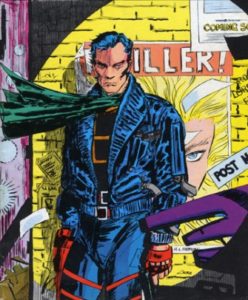 I’d spoken to Alan a few years ago via email—and now in his ’70s, he said that he has no memory of what must’ve seemed to him a harmless office prank (although I’ve never, to this day, heard of any other such pranks being played on anyone else at DC Comics.) The effect of that incident on my consciousness, however, was considerably more severe, and long-lasting. The notion that such juvenile, mean-spirited treatment was actually intended for me—literally as my reward for the years of extremely difficult and dedicated effort to give my absolute best to the people who’d given me such a once-in-a-lifetime opportunity—continued to grow and ferment in my subconscious mind, from then on. The quality of my work—which was proportional to the enthusiasm and tremendous gratitude I’d felt at being given such a great chance to actually become an artist in the comics field—began to steadily diminish, with each succeeding day, week, and month spent at my board. I was completely bewildered at the inexplicable treatment that had been intended for me, and became more and more depressed at my complete frustration to even begin to understand what it was I’d done to deserve it. Despite being DC Comics’ first black artist, and despite having always received negative comments instead of positive encouragement from the editors of the various books I’d worked on since my debut on Black Lightning (I was always told that my work—such as the GA, Batgirl and Catwoman jobs I’d done in World’s Finest, where I’d first begun experimenting with the visual concepts that came to full flower in The Batman Annual #8—was too “arty”, too “difficult to follow”, or as one editor put it “the fans don’t want artwork to hang up on their wall”—which even back then, I knew was patently untrue, or at least, a pathetically incorrect opinion) and despite being ALWAYS treated as a “black” artist (as if I represented an entire nation of fundamentally alien people, all by my lonesome)—it never once occurred to me that the collapsing chair prank was an expression of racism, or a reaction to my “blackness.” Despite everything I’d learned about American society in relation to black people, back then I always viewed myself as simply an artist trying to do his very best in a difficult and highly competitive field—with little to no prior experience in the actual performance of my job. Basically, I was always too busy trying my best to do better work than my last to notice any political bent behind the discouraging comments I’d gotten—they always just motivated me to try harder, that’s all.
I’d spoken to Alan a few years ago via email—and now in his ’70s, he said that he has no memory of what must’ve seemed to him a harmless office prank (although I’ve never, to this day, heard of any other such pranks being played on anyone else at DC Comics.) The effect of that incident on my consciousness, however, was considerably more severe, and long-lasting. The notion that such juvenile, mean-spirited treatment was actually intended for me—literally as my reward for the years of extremely difficult and dedicated effort to give my absolute best to the people who’d given me such a once-in-a-lifetime opportunity—continued to grow and ferment in my subconscious mind, from then on. The quality of my work—which was proportional to the enthusiasm and tremendous gratitude I’d felt at being given such a great chance to actually become an artist in the comics field—began to steadily diminish, with each succeeding day, week, and month spent at my board. I was completely bewildered at the inexplicable treatment that had been intended for me, and became more and more depressed at my complete frustration to even begin to understand what it was I’d done to deserve it. Despite being DC Comics’ first black artist, and despite having always received negative comments instead of positive encouragement from the editors of the various books I’d worked on since my debut on Black Lightning (I was always told that my work—such as the GA, Batgirl and Catwoman jobs I’d done in World’s Finest, where I’d first begun experimenting with the visual concepts that came to full flower in The Batman Annual #8—was too “arty”, too “difficult to follow”, or as one editor put it “the fans don’t want artwork to hang up on their wall”—which even back then, I knew was patently untrue, or at least, a pathetically incorrect opinion) and despite being ALWAYS treated as a “black” artist (as if I represented an entire nation of fundamentally alien people, all by my lonesome)—it never once occurred to me that the collapsing chair prank was an expression of racism, or a reaction to my “blackness.” Despite everything I’d learned about American society in relation to black people, back then I always viewed myself as simply an artist trying to do his very best in a difficult and highly competitive field—with little to no prior experience in the actual performance of my job. Basically, I was always too busy trying my best to do better work than my last to notice any political bent behind the discouraging comments I’d gotten—they always just motivated me to try harder, that’s all.
The only editor who had ever expressed any kind of encouragement toward me was Dick Giordano—who was responsible for my getting The Batman Annual, the 4-issue Green Arrow miniseries (another of my favorite jobs), and THRILLER itself. So I was not only hurt, and offended by the stupid stunt—I was also considerably discouraged, and bewildered at what “crime” I’d committed to deserve it. I became less and less communicative with Lynn after it’d happened. Our relationship was strictly a one-sided one to begin with. I was always the one helping her confront and overcome her undeserved lack of self-esteem—instilled in her by her previous boyfriends, who’d apparently enjoyed dumping on a talented woman rather than actually nurturing and helping her develop that talent. Our relationship was never the usual, traditional one of partners mutually supporting each other, and helping each other grow—it was strictly all about me trying to convince her that she was indeed a person worthy of success, in both her profession, and life in general. My creation of the Batman Annual was essentially my attempt to show her that I was someone whose opinion, when it came to art—and consequently, herself—had credence. In all the three years that we were together, I never once told Lynn about any of my own personal problems, including the collapsing chair incident. So another result of that, besides my growing confusion and loss of enthusiasm for my work—was also a growing distancing between us. Fortunately, by then she’d acquired enough self-confidence not to need my constant encouragement and emotional support as much, or to the degree that she had before.
When I sat at my drawing board, however, all the repressed anger, bewilderment, and frustration would seethe inside of me—to the point where I eventually began to care less and less about the work that I was doing, simply because I began to care less and less about the people for whom I was doing it (the whole of my creative consciousness at that time was centered solely around my editors, and the people at DC Comics—I’ve seldom received any feedback of any kind from fans, and especially not during that point in my career. I had no idea how my work was generally received in Comicdom, for the majority of the 25 years I’ve worked at DC—all I knew was that my editors always seemed negatively critical of it.) The Batman Annual was inspired directly by Lynn, and the work of Ayn Rand, but by the time I’d come to draw THRILLER, I’d thought of myself as an actual professional comics artist—and that particular job had no element of inspiration from my own personal life behind it—other than what I related to in the romance between the titular character, and her husband. Fortunately, the brilliance of Robert Loren Fleming’s scripts, ideas, and characters still managed to inspire me to at least try to do my best in bringing them to life on the comics page. But it was very hard to even want to do one’s best for people who seemed to not only not really appreciate it—but had actually tried to punish and humiliate me, in return. I’m certain that if I’d sat in that chair, and it’d been my ass hitting the floor that day, the extreme anger and severe depression I’d subsequently experienced would’ve undoubtedly manifested itself MUCH earlier in both my conscious mind, and in my work. But since it’d happened to Alan, and not directly to me (despite being its obvious intended target)—and since he’d laughed it off so easily, it took a relatively long time for reaction to simmer in the back of my mind before boiling over full steam into my consciousness, and unfortunately, onto the pages I drew. Bob’s scripts were really still hugely inspiring, and fun, and that carried me over through a lot of rough edges for quite a while—but eventually, even that was not enough to erase the memory of what’d happened, or fill the steadily growing vacuum of the loss of the creative joy, and fount of artistic inspiration that’d always motivated me since my creation of The Batman Annual. Simply put, that chair incident had the long term effect of taking away all the fun and joy of drawing comics from me. The very same people who’d given me the opportunity to live my dreams, had directly caused that dream to become a living nightmare—and all because of a stupid, cruel, and childishly juvenile office “prank.”
The deterioration of my work became noticeable during the end of the third issue, and especially in the raw, violent line-work of the fourth. Dick Giordano called me into his office to request that he ink the 5th issue—but never once asked me any question regarding why my art style had so noticeably changed—didn’t even address the issue at all, actually. I disinterestedly agreed on condition that Lynn could color it, which she did. That remains the last issue of THRILLER that I can look at today without being flooded by a feeling of incredible depression, and overwhelming regret (at not being professional enough at the time to overcome my own emotional problems, and allowing them to negatively influence my artwork.) Lynn had also by that time begun seeing Frank Miller, who worked at Upstarts Studio along with Walt Simonson, and Howie Chaykin, for whom she’d been doing some coloring work. I knew long before I’d directly confronted her about it that she’d been seeing Frank behind my back—but at that point, I honestly didn’t care, even about that. By then, my creative compass was gone, and a depressive inertia had set in. I knew that I had nothing to offer her, much less myself, in the state that I was in. In hindsight, of course, I realize now that if I’d finally opened myself up emotionally to her, and told her about what had happened, and how it was affecting me, it might’ve been easier for both of us—but my immature pride, my self-deluded conception of being a “strong, independent individual” (which I certainly was not, at that time) prevented that—so I just let her drift away from me. It’s truly ironic that our relationship ended in a directly opposite way than it’d begun—with her full of self-confidence, ready, willing, and eager to face her own future—and me with my own self-confidence, and creative joy all but gone, spiraling further and further down into a bottomless pit of depression.
In all honesty, I was still very happy for her, because, as I would eventually discover in the lean, dark years yet to come, and not without a little satisfaction—I really did love her. There’s a sequence in my graphic novel, “The Original Johnson” about Jack’s own spiral into depression after being betrayed by a woman, Clara Kerr, that’s a very accurate depiction of what I’d felt and experienced—but in my case, it was because of my betrayal by the people who’d given me the chance to live my dream, rather than by the woman in my life. Like Jack, I’d also descended into drinking, debauchery, and all sorts of self-destructive acts—but never at any time did I resent Lynn. Quite the contrary, I’d always feel some small measure of happiness whenever I’d read about how well she and Frank were doing in the industry. I’ve always felt somewhat blessed in life to have at least once known someone whom I’d actually loved that much. The memories of our time together remain immortal, and unchanged in a very special portion of my mind. I’ve also been very happy for Frank, and his innumerable successes in the comics and movie industries. I think that he earned them all, with the quality of the work he’d consistently produced—and besides, he always took good care of my baby…
Shortly after getting together with Frank, Lynn had invited me to come out to their townhouse in Montauk for a weekend so that I could meet him, and see the kind of man she’d chosen to be with, after me. To my tremendous surprise and pleasure, I found that I really liked Frank. I saw the private smile behind the public scowl (at least, as it was directed towards her), and was most pleased to see that there was such a nice guy behind that monster talent of his (he was working on “Ronin” at the time)—which I said in those exact words to her on my final day there, as she was driving me back to the train. They got married shortly afterwards, and so ended my relationship with Lynn Varley. She came back to me 20 years later in 2005, after we’d met again at the after-party for the professionals-only screening of the Sin City movie (to which she’d arranged to have me invited.) I received a call from her at 2am shortly after that, asking me to meet her later that day, which I did. We spent the day together, during which I realized that what she really wanted from me was help in leaving Frank, who by then had fallen deeply into alcoholism and drug addiction. I told her a few good things about herself that I thought she needed to know—such as that she’d been my muse, Frank’s muse, and now it was time for her to be her own muse, and do for herself what she’d help us both do in our respective careers: find the courage to believe in ourselves. The very last words I said to her over the phone were “Lynn, you’ll never get anywhere by being a coward.” After a short pause, she hung up—and a little while later, finally divorced Frank. I’ve never seen nor heard from her again. I certainly do wish her well, and sincerely hope that she’s happy, wherever she is. That was always my main interest in our relationship.
Despite all that went on behind the scenes, the first 5 issues of THRILLER contain some of my best storytelling work, even though the quality of my drawings deteriorated considerably after issue #2. That was directly because of the considerable inspiration I still received from Robert Loren Fleming’s brilliantly original scripts, and it’s why they still remain among the most favorite jobs of my career. I’d also done some very good work in the 4-issue Green Arrow miniseries written by Mike W. Barr, and inked by the late, great Mr. Giordano, but the storylines, ideas and characters contained in THRILLER were some of the most original and fun that I’d ever worked on, even in my unusually dark and depressed state of mind at the time. Much to my surprise, some of the work I’d done in those dark decades of depression and despair in my career is still fondly remembered by the fans—specifically, the THRILLER series itself, and my work on the Black Canary mini-series, and eventually full-fledged series.
Maybe it was because drawing her gave me the opportunity to channel the mostly pleasant memories I still had about the other (real) blonde that I’d known in my life (Lynn)—but in light of knowing what I COULD and SHOULD have done, had I remained at my creative and artistic peak back then, instead of wallowing in years of depression, solitude, and self-pity—nothing I’d ever done from the late ’80s thru the whole of the ’90s and beyond was ever good enough work, to me. I finally began to snap out of my cycle of self-imposed bitterness and self-destruction in the early years of the 21st century, when my other favorite editor at DC Comics, Andy Helfer (who was always a true gem of a human being to me from the first moment that I’d met him—and probably the only editor I’ve ever met whom I’d be privileged to call a friend) gave me a 5-part Batman and Robin job to pencil (“Grimm” in LOTDK # 149-153) which was graced by the inks of the great Jose Luis Garcia-Lopez, whom I’d originally requested as inker, but was told that he was unavailable.
Fortunately, Jose happened to be in Andy’s office at the time that some of my pages were on his desk—and when informed of my request, he immediately picked them up, and walked out the door with ’em! I’ve been personally indebted to Mr. Garcia-Lopez for that ever since (besides being a huge fan of his work to begin with.)
The national tragedy of 9/11 cut short my return to creative production in mainstream comics, following DC’s eventual downsizing of its entire staff (freelancers like me being the first to go.) And America’s transparently jingoistic return to its former racist, White Supremacist national character during the administration of “nukular” president George W. Bush, and his crony-in-charge-of-The-Dark-Side, Dick Cheney—prompted my creation of the third, and most favorite work of all in my entire 40 year career to date: “The Original Johnson.” But not before I’d received yet another parting blow from the folks at DC Comics.
Art Director and Talent Co-ordinator, Mark Chiarello had called me shortly after 9/11 to request a piece for a commemorative book they were producing, and I submitted a drawing of Black Lightning, Superman, and Wonder Woman, all wearing black armbands, and saluting the burning Twin Towers—with drawings of the NYPD and FDNY insignias below the image, and the caption “There are HEROES living among us” below that. I’d even commissioned one of the color artists from Neal Adams’ Continuity Studios, Danny Scott, to color the work. I was later informed by Danny (a white fellow, btw)—that Chiarello had told him that DC was not going to use the piece. I then called Mark, and after he’d confirmed that assertion (apparently without the intention of ever letting me know about it directly) and I asked him, pointedly “Is it because I’d put Black Lightning in it?” His reply was “No, no—Black Lightning is one of my favorite superheroes!” For some reason, the phrase “Blacks are some of my favorite people” immediately came to mind… So I asked him why then was the piece not being used—if it wasn’t well drawn enough, I could accept that…but his answer was “Because it didn’t fit in with the theme of the book.” When asked what that theme was, he said… “Heroes.” Sheer incredulity prevented me from a response to that statement—not only had I drawn three heroes saluting the Towers, I’d even highlighted the word “heroes” itself, in the accompanying caption! But of course, my decision to feature DC Comics’ first black super-hero so prominently next to its first great white male and female super-heroes, had NOTHING to do with the piece being rejected… I didn’t need a building to fall in on me to get the point, so rather than futilely arguing the matter, I simply hung up the phone.
One last incident, on a related note: Flash forward to 14 years later. In 2013, I’d contracted colon cancer—and reproduced below is an email sent to DC Co-Publisher Dan Didio in 2015, regarding the subsequent treatment I’d received at the hands of two of his editors while in the grips of that terrible disease (now completely excised from my system, I’m happy to say.) The email will recount DC Comics’ third—and hopefully final—exercise in questionable, if not Dastardly Conduct towards myself, their first ever black artist, and creator of their first ever original black super-hero. After the email, I’ll continue with the third, and most favorite job of my entire 40 year career to date. Please pardon the digression, but I think you comics fans out there might find this of some small interest. I almost still can’t believe it’d actually happened…but it did—and to me.
From: thvXXXX, <thvXXXX@gmail.com>
Date: Mon, Jul 13, 2015 at 6:38 PM
Subject: SUPERMAN / BLACK LIGHTNING inks
To: “Didio, Dan” <Dan.XXXXX@dcentertainment.com>Hi, Dan:
Welcome back. I hope SDCC was fun this year (I’d be surprised if it wasn’t!)
As you know, for some years now, I’ve been trying to secure employment from DC Comics ever since my last published work, LOTKD # 149 -153 (graced by the inks of the great Jose Luis Garcia-Lopez) appeared in 2001—shortly before the tragedy of 9/11 forced DC to considerably downsize its bank of employees.
You were gracious enough to suggest that I deal with the editors directly—and I did.
First, Harvey Richards (Andy Helfer’s Asst. Ed on the LOTDK series, now a full-fledged Editor) had me draw three Hawkman sample pages for Bob Harras’ approval, back in Dec. 13—and then promptly refused to return any of my phone calls or emails after being informed of my subsequent diagnosis of cancer in Jan. ’14! (I sent him an email reminding him that cancer was not contagious—but don’t know if he’d read that one, either…)
Then, shortly after beginning my cancer treatments in Feb. ’14, I heard from Eddie Berganza that he was having a Superman/Black Lightning script written for me. Needless to say, I was overjoyed! I finally received the 20 pg. script in October, and began work immediately. Eddie’s response to my pencils was quite positive—“Awesome”, “great”, etc…
However, shortly after my final surgery to remove the cancerous tumor in March of this year (and while I was still in the middle of penciling the job), Eddie also inexplicably chose to stop all communications with me, as soon as DC left New York for Burbank! To this day, I have no idea why—unless he was afraid that I’d lower myself to some sort of physical retaliation had he done the deed while still in NYC (you know how stereotypically violent we black guys are supposed to be…) I can honestly think of no other explanation for his bizarre, and highly unprofessional behavior.
Fortunately, thanks to my contacting Andrew Marino, I was able to finish penciling and inking the job—which I did in four weeks (i.e: the inking), while recuperating from the final surgery—and receive a paycheck for my efforts. To this day, I’ve still not heard a single word from Eddie Berganza, despite sending him numerous emails.
Thanks very much for offering to review the work that I’ve done on the S/BL script, and hopefully, see fit to recommend me for a monthly title—which is ALL that I’ve ever wanted from DC Comics. I think that my work merits it, and I sincerely hope that you’ll agree.
Thanks again very much for your time, Dan. It’s been greatly appreciated.
Take care.
Trevor.
To date, and to my knowledge, nothing has ever been done by way of reprimand (or action of any kind taken) regarding Harvey Richards or Eddie Berganza’s lowdown behavior towards a cancer patient. The Superman/Black Lightning job I’d completed over a year ago remains shelved and unseen by the general public, and my repeated emails to Dan Didio following the recent murders of Alton Sterling and Philando Castile—asking if that job will ever see print, and urging DC Comics to do so, since the whole point of the script (which referenced both the shooting of the also unarmed Michael Brown, and subsequent Ferguson riots) was that certain members of the police force in America need to both confront and overcome their irrational fear of black people, an issue unfortunately more topical and relevant now than it was over a year ago—remain unanswered.
However, I’ve just checked my Inbox, and the email I’d sent to Dan Didio just this morning, informing him of my intention to make public the above-mentioned email in this interview—has received a prompt reply! I sincerely doubt it contains news about DC’s finally publishing that S/BL job, so I intend to read it later, after I’ve taken care of some more important business in my life.
Such as continuing with this interview…
“The Original Johnson” – The third, and absolutely most favorite job of my entire 40 year career to date, completed in 2008, shortly before the first black President of the United States of America was elected, and took office the following year (in which it was published.) Following my re-emergence into the light of true creative expression early in 2001 (LOTDK #149-153), after my descent into The Dark Side because of the infamous collapsing chair incident in the mid-’80s, I realized that I had to do something significant, to permanently reassemble the shattered shards of my personal self-respect, and broken creative self-confidence—especially in an America stricken by a severe case of “brownskinophobia”, following the attack by a group of brown-skinned lunatics on The World Trade Center. Not to mention the nature of George W. Bush, and Dick Cheney’s administration, during which rampant jingoism, disguised as patriotism, and the xenophobic racist hatred characteristic of white supremacist mentalities, once again reared their ugly heads in the national character of The United States of America—a land allegedly defined by the concepts of Freedom, Justice, and Equality for ALL. “The Original Johnson” became that much needed rebirth of my soul, life, and artistic career.
I’d read about, and been fascinated by the story of Jack Johnson for a very long time. How did ONE man, back in a time when America was a LEGALLY and OPENLY racist nation, do what he did? How was it possible for a black man to beat up white men in public, and actually marry white women in Early Racist America, without being lynched, shot, or otherwise killed—decades before the horrible violence and brutality of the infamous “Red Summer” of the early 1900s, the atrocities perpetrated on black people during the Civil Rights Movement of the ’50s/’60s, or the tragic mutilation and murder of 14 year old Emmett Till in 1955, just for the “crime” of whistling at a white woman—had even occurred? And why did Jack Johnson seem so genuinely HAPPY, in every single photograph of him that I’d ever seen? The man was obviously no ignorant, cowardly, grinning Uncle Tom, eager to trade in his dignity for acceptance, nor someone “getting one over on de white man”, as in the cartoonish parody portrayed by James Earl Jones in the racist piece of…tripe “The Great White Hope”. So what was his secret? HOW was he able to do what he did—and leave an indelible mark on both American and World History that would never be equalled, much less surpassed? The uber-racist fantasy of Tarzan, white lord of all of dark-skinned Africa, and Daredevil, the fictional “Man Without Fear”, are just that—fantasies. Jack Johnson was renowned, even among his enemies, for the absolute and conspicuous absence of fear, in any part of his truly remarkable character and personality. The man even once lectured to an entire group of KKK members, and walked away unscathed, after he was done! And this was a REAL human being, not a creation of fiction!…What’s more—he was BLACK!! How did this man do what, by any stretch of the human imagination, was simply…impossible? How did he enjoy the moments, minutes, hours, days, weeks, months—and years—of his life, all while living and working in the very midst of an entire NATION of his avowed, rabidly, and irrationally violent enemies? Obviously, he knew something that the rest of us didn’t…but SHOULD!
I’d started working on a tentative biography of Jack way back in 1996, but later shelved it when the constant demands of my job, which routinely entailed hunting for future work, while working on present jobs—the freelancer’s bane—left me with very little time to devote myself to it. In the social and political climate of post-9/11 America, I decided it was finally time for me to do just that—for the sake of the potential enlightenment of my fellow man, and more importantly, for the regeneration of my own badly crippled soul. As I delved into the research necessary to write about this extraordinary man, I began to realize why he’d never been the victim of any assassination attempts. American sportsmen, despite their politics and/or hate-filled rhetoric, admire and respect above all else, TRUE COURAGE—and Jack embodied that with every fiber of his being, and every inch of his towering, 6-foot 2 frame. From the very start of his career, and throughout his life, Jack Johnson was universally known for three things: His utter fearlessness, both in and out of the ring, his incredible boxing prowess, and his absolute refusal to let anyone else do his thinking for him. These are the qualities—absolutely unprecedented, and literally considered impossible for a black man in America to possess (most especially in those most rabidly racist times)—that exuded an irresistible fascination for sports fans around the world, and which inevitably superseded the entrenched and irrational hate they’d been conditioned to feel for their “inferior” dark-skinned brethren. The very uniqueness of Jack’s stratospheric levels of courage, self-confidence, and brazen, taboo-flaunting individuality (combined with his actual, superior level of boxing skill), are what kept him alive in a society where black men were routinely debased, abused, and murdered, merely for the color of their skin. The spectacle of seeing a member of “an inferior race” continually and decisively achieving victory after victory over the always-white representatives of “The Greatest Country on Earth” was simply too good a show not to let go on. Personally, I believe that deep down in the heart and mind of even the most dyed-in-the-wool racist lies the realization, no matter how deeply buried and/or denied, that ALL human beings are indeed created equal—and each one a representative of the ONE true, Human Race that has always populated the planet. The power of Jack’s primal personality and courage penetrated down to even those most primal fears, held deep in the hearts, minds, and souls of his fellow men—and conquered them, just as he conquered every single one of its odious tenets, and referents, in actual reality. This is a quality of character that will always ring true, and resonate within the human soul, regardless of the times—and throughout all time. ALL human beings NEED to believe in a HERO, a force, will, or personality larger than life itself, one that helps them face and overcome the challenges inherent in the daily act of just living. And deep down inside, even racists are truly human—if not necessarily humane.
“The Original Johnson” remains the favorite work of my entire career first and foremost because it’s the first project I’d ever worked on that was completely originated, designed, and created by me. The one into which I’ve poured the most of my own heart, mind and soul—and consequently, the one from which I’ve received the most genuine pleasure and satisfaction in return. Writing forced me to focus, organize, and finally express my disparate thoughts into a coherent whole, and as a consequence, enabled me to ultimately learn the true nature of my own mind, and p.o.v. As a result of writing TOJ, I became more clearly conscious of what it was that I truly believed in life, and WHY—and the choices and decisions I made in my life became much easier and clearer to me. I literally became a better person just from studying and writing about this incredibly unique, singularly remarkable man’s life story—and finally managed to permanently repair the shattered shards of my own societally, and self-destructively broken soul in the process. Each and every page of “The Original Johnson” was literally an epiphany to me—a revelation about the true nature of Humanity, Racism, and the conditioning of one upon the other in society—which I tried, to the best of my ability, to share with the rest of the world. My only goal in creating TOJ was to express and communicate the truth behind Jack Johnson’s character, and the reason why he was able to succeed in conquering the monster that is Racism, over and over again—in truly spectacular fashion, and on a global stage.
 That reason being because Jack Johnson, within his own heart, mind, and soul, was simply NOT RACIST. He consciously decided to represent Humanity in his life, instead of wasting a shred of his time, consciousness, or character validating the odious tenets of the fallacy of Racism—a perverted expression of the human soul that he simply ignored, completely. Here are the man’s own words on the subject: Regarding “race”, he said “I treat people as if ‘race’ doesn’t exist”—which, in point of fact, and in actual reality—it doesn’t. Regarding Humanity, here is the very last sentence of his autobiography (“Jack Johnson is a Dandy”, written in 1926, when he was 48 years old): “As I look back upon the life I have lived, and compare it with the lives of my contemporaries, I feel that mine has been a full life, and above all, a HUMAN life.” (Emphasis mine.) This man really LIVED—really existed—and really thought and said those words, while single-handed conquering an entire world slavishly devoted to the self-serving hypocrisy of Racism, and its inherently mind-destroying tenets. It’s my fervent hope that whosoever reads “The Original Johnson” will then read about the actual man himself—and learn for themselves exactly who he was, what he did, and the unique, unprecedented, truly extraordinary, and completely unparalleled level of achievement, and HUMANITY, that he left behind for ALL of us to hopefully learn from, one day. In the words of Ayn Rand (who was only 3 years old when Jack won the title of heavyweight champion of the world in 1908), Jack Johnson possessed “the courage of his convictions”—he truly LIVED what he truly believed.
That reason being because Jack Johnson, within his own heart, mind, and soul, was simply NOT RACIST. He consciously decided to represent Humanity in his life, instead of wasting a shred of his time, consciousness, or character validating the odious tenets of the fallacy of Racism—a perverted expression of the human soul that he simply ignored, completely. Here are the man’s own words on the subject: Regarding “race”, he said “I treat people as if ‘race’ doesn’t exist”—which, in point of fact, and in actual reality—it doesn’t. Regarding Humanity, here is the very last sentence of his autobiography (“Jack Johnson is a Dandy”, written in 1926, when he was 48 years old): “As I look back upon the life I have lived, and compare it with the lives of my contemporaries, I feel that mine has been a full life, and above all, a HUMAN life.” (Emphasis mine.) This man really LIVED—really existed—and really thought and said those words, while single-handed conquering an entire world slavishly devoted to the self-serving hypocrisy of Racism, and its inherently mind-destroying tenets. It’s my fervent hope that whosoever reads “The Original Johnson” will then read about the actual man himself—and learn for themselves exactly who he was, what he did, and the unique, unprecedented, truly extraordinary, and completely unparalleled level of achievement, and HUMANITY, that he left behind for ALL of us to hopefully learn from, one day. In the words of Ayn Rand (who was only 3 years old when Jack won the title of heavyweight champion of the world in 1908), Jack Johnson possessed “the courage of his convictions”—he truly LIVED what he truly believed.
He also saw that most fabled and historically desirable of beings, “the white woman” as what she was, in actual fact: Just another piece of property owned by white men, and designed to be as exalted as black people were degraded for one reason only—the dissemination, popularization, and perpetuation of White Supremacy throughout the world. White women (even to this day) represent one’s reward for believing in, and living according to the racist tenets of white supremacy, just as black people represented the punishment for opposing them (not to mention a source of incredibly cheap labor, and the automatic feelings of human superiority generated by the presence of one’s natural “inferiors”—a built in perk of being an “American” back then.) Jack inverted those tenets superbly, in his life. The white women he chose to marry represented the level of culture, success, and social sophistication that he had achieved by his own efforts in life—and the fact that he’d obviously EARNED their love, since they all came to him of their own free will, was living testament to the fallacious nature of racist thought when it came to the “inherent” character of his own dark-skinned people. Again, Jack put his thoughts on the issue both simply and succinctly. In his own words: “I court white women because they treat me better than black women.” In a world of universally conditioned black self-hatred—and from the p.o.v. of just plain common sense, could any man (or woman) deny the simple truth, and irrefutable logic of those words? There’s also an odious rumor in existence that Jack Johnson was a wife-beater. This regarding the only man in history with the courage, self-confidence, and character necessary to single-handedly take on and defeat the most hypocritically racist nation in the entire history of Mankind (“the home of the free” and “the land of the slave” are intrinsically incompatible notions, which can ONLY be reconciled by conscious hypocrisy.) That such a man would actually be coward enough to beat a woman, absolutely strains human credulity.
In all of my readings and research on Jack Johnson, I’ve NEVER come across a shred of evidence to support this conclusion, and I truly believe it to be the creation of small-minded and jealous men, who need to find some kind of chink in the seemingly invincible armor of a man whose character, thoughts and actions they simply cannot truly understand. This includes Geoffrey Ward, author of the book “Unforgivable Blackness”—whose inherently racist title annoys me, and evokes a huge measure of surprise, since no-one has ever seemed to realize the unambiguously racist nature of that phrase. One indeed coined by the great black scholar, writer, and historian, W.E.B. DuBois—but strictly to express the racist sentiments and p.o.v. of Jack’s enemies during his time. There’s nothing tongue-in-cheek, nor even remotely acceptable to me about using the same phrase here in the 21st century, especially in a biography about Jack Johnson. It seems like a deliberately or subconsciously hidden concession to racist thought, quite frankly. Fortunately, Ken Burns’ very well done documentary of the same name (and based on the same book) at least did not repeat that odious slander—if not its undeniably racist title.
Jack’s first white wife, Etta, eventually committed suicide because of the unrelenting nature of the societal forces arrayed against she and her husband. His second, Lucille Cameron—who came to Jack in tears, after spending an entire week in jail (with the approval of her own racist mother, believe it or not!)—simply because she’d refused to denounce Jack publicly, or retract her statement that she loved him—became his wife, and remained married to him for 12 years, including the seven he’d spent in self-imposed exile in Europe following the travesty of the Mann Act verdict. And his third white wife, Irene Pineau, wrote an impassioned, 5 page refutal to a racist reporter’s allegations about her husband—with whom she remained until the day of his death—describing him as “brave, loving, gentle, and kind” and in such glowing terms overall as I’ve never heard said by a woman about the most devoted white husband, ever! These are not the actions of battered women, but rather of women who recognized the true, UNFORGETTABLE GREATNESS of mind, soul, and character that was embodied in Jack Johnson. His legend is immortal, but his legacy—and its lessons for the rest of humanity—still remain to be understood, especially by the darker-skinned people in America today. People who still unthinkingly refer to themselves by a universally recognized vile, insulting epithet, and seem completely unaware and untroubled by being referred to as “colored people”—yet another unabashedly racist term—in the very title of the single organization most widely known throughout the entire world as purportedly dedicated to representing their human and civil rights. But one day, the NAACP (or, as I prefer to think of ’em: the NAAUT—National Association for the Advancement of Uncle Toms—appropriate, since they’ve really achieved naught for the true advancement of black people in America) will also receive their just and due desserts. One day, the TRUTH shall indeed set my people—and ALL people throughout the world—FREE.
As “The Original Johnson” ultimately did, for me. As a very young, inexperienced and emotionally immature young teenager, thrust so unexpectedly into a milieu where I was expected to apprehend and express the contents of my own soul, for all the world to see–and judge (at least, that’s how I saw my profession, and still do.) I’d reacted to the inexplicable “punishment” I’d received from my own “parent” company by eventually supplying the “crime” itself, in the subsequent degradation and denigration of my own work: mind, body, and soul. An ill-advised course of action that was nonetheless complemented (and tacitly approved, in my mind) by the fact that at no time during my decades-long self-imposed depression, degradation, and artistic disintegration, did ANY of my editors at DC Comics even ONCE seem to take notice, ask, or question me about why such an obvious change in my work had occurred–not once. As a matter of fact, the work I continued to hand in was always accepted without input or change of any kind, by all of my editors (with the notable exception of Andy Helfer, the only editor in my entire DC Comics career who ever suggested or requested changes in the work I’d done for him, in LOTDK # 149-153. A consideration that significantly helped spark the desire in me to become better at my craft.) And lest you think that mine was a strangely extreme reaction to a simple, isolated, childish “prank”–don’t forget (for I was never allowed to) the nature of the society in which I lived, and its still-constant messages, both subliminal, and overt, reasserting over and over again the concept of inherent black inferiority, and consequent white superiority (nowadays known as “white privilege”, I believe.) I can guarantee that any honest black person of my age and time knows exactly what I’m talking about. And as an artist, whose job it was to study the very culture in which I lived, and channel that knowledge through my own somewhat finely-tuned, and definitely highly-strung sensibilities, the societally-fueled, daily compounded discouragement, depression, and despair that I’d experienced as a result of that primal betrayal should come as no real surprise, nor mystery. Interestingly enough, as my work degraded in both quality, and level of uniquely individual artistic expression, I found myself treated less and less as a freak–as DC Comics’ “black artist”–and more as just another employee, one essentially rewarded for expected mediocrity. Just as Jack Johnson’s relentless persecution by the powers-that-be disappeared after he’d voluntarily relinquished his title to the palooka, Jess Willard (the only time Jack ever “defended” the title without the American flag around his waist. Check the photos, and see for yourself)–a parallel that became blindingly clear to me as I studied the events of his later life. Fortunately, what he’d so spectacularly achieved, and so consistently accomplished prior to that final “fall” was more than enough to help me find the wings I’d needed to make my own broken soul finally soar FREE again–and for that, I’ll be forever grateful to the great, and immortal Jack Johnson.
Ramon: Can you describe your process for laying out and drawing a story or page?
Trevor: My process in laying out/drawing a page is very simple: I run the thoughts, words, ideas, and narrative intent of the elements needed to be expressed on that page through my head, over and over again, until they begin to coalesce in visual form in my mind’s eye—much like seeing a movie of the actual scenario inside my head. Then I pick the most dramatic frame, one that expresses the most significant elements of that particular scene in context to the overall story being told—and convert it into the contents of a panel, with the camera angle and visual effects already clear in my mind. The more unusual panel shapes and/or page compositions in my work come out of the desire to frame these individual “scenes” in such a way as to draw particular attention to elements in the panel of most important or effective narrative value—and to provide a sort of subliminal visual “soundtrack” to the contents of the panel itself. This emphasizes the dramatic or narrative “beat” of that specific scene, in relation to the scenes/panels both before and after it on the page. Sometimes I’d envision an entire page, composed of individually shaped panels integrated together to form a whole final design, and sometimes I’d visualize each panel’s form and content individually, then fit them into each other as I went along. This is why I consider the element of conscious design to be the most essentially defining characteristic of my work—and I’m almost always capable of explaining the reason behind my designs—exactly why I chose to express myself visually in the manner that I did. I also always listen to music when I work, because the nature of musical composition is very similar to the way in which I try to compose my pages—individual notes (lines) arranged next to each other (to form drawings) in specific groups (panels) that are intended to flow into each other in specific measures of time (borders/margins), and ultimately form a seamless, fluid whole (pages) as an end result. And just as each bar of music combines with the ones both before and after it to create a finished musical composition, so too do the individual panels and pages of my work combine with each other, in a deliberately arranged manner, to form a complete, finished, visual continuity—a story—to the reader.
Music is also a wonderful stimulant to the creation of images in the mind’s eye. As everyone knows, specific types of music tend to evoke specific types of feelings, and images, in the listener (as a general effect, that is—individual reactions will of course, vary with individual temperament. Some people have particular smells and/or tastes evoked by particular passages of music—so I’m speaking here in terms of the conventionally held general effect of music on human consciousness, which is usually emotional, and often visual.) Music also stimulates certain physical reactions, as well—dancing. Which also helps me envision both the action inside a panel, as well as the relation of the panel itself to the other elements on the page. Most of my best composed pages are really depictions of panels dancing with each other, against the backdrop or “stage” of the page’s frame itself. I tend to be very analytical regarding my own inner processes, and I find that music also helps me greatly in being aware of how various forms of stimuli affect my mind—including, and most especially, its subconscious functioning (which, unlike our unconscious mind, usually lies just beyond our threshold of conscious awareness—but is perfectly accessible once our awareness has expanded beyond that the limits of that “normal” threshold. Our truly unconscious functioning is, I think, only expressed in our dreams—and I would imagine sleepwalking, talking in one’s sleep, or the state of a person under hypnosis would be expressions of the truly unconscious mind in action.) I’ve always believed that the better you know yourself, the easier your conscious choices and decisions in life become—and the more beneficial they are to your ultimate inner well-being. This is also known as having peace of mind, and it’s a state of being that I highly recommend to everyone.
Ramon: I heard on another interview that you have a way of figuring out what one’s drawing style is. Can you explain?
Trevor: I don’t recall mentioning in any previous interviews that I had a particular way of figuring out someone else’s drawing style—unless you’re referring to something I’d mentioned a long time ago in an early interview about being able to decipher who’d drawn or inked a picture in a comic book by close scrutiny of the line-work. That ability was the natural result of regular, fervent, and almost obsessive study of the work of my favorite comics artists—a prolonged and profound veneration of their drawings that had the result of enabling me to almost literally “feel” the personality of the individual artist who’d created the actual lines involved in a particular drawing, and retroactively “recreate” the psychological/emotional process I felt they’d gone through in its creation—my impression of the sum total of the personality they’d expressed. Not unlike recognizing your favorite singer or composer, in the notes, bars or melody of a tune that you’d never heard before. Many’s the time that I’ve heard a previously unknown piece of classical music on the radio, and been instantly transported to a state of sublime joy, infinite playfulness, and an almost inexpressible serenity—only to find after it’d ended, that it was the work of my favorite composer of all time—Mozart.
(On rare occasion, only Haydn has ever evoked a similar reaction in me.) There’s nothing remarkable about the ability to recognize the work of a particular artist with whom you’re already familiar, by a close attention to its details, and the distinct reaction that it evokes in your own sensibilities. I think that most comics fans develop that ability over an extended period of exposure to different artists’ work. At one point, I was even able to recognize Tom Orzechowski’s particularly distinctive lettering style—which, I think, was a rare achievement on his part, lettering being such a wholly mechanical, rather than individually expressive medium in comics. Artists’ (and inkers’) drawing styles are very easy for me to recognize, since I’m already so extremely analytical when it comes to my own creative process, and its expression on the printed page, but colorists’ work isn’t so easy for me to recognize, since I have limited experience in producing color work myself (I find the infinite decisions necessary, the infinite choices re: permutations, tones, and gradations of colors, their various effects on and/or against each other, the nature, and demands of reflected/refracted/direct light, etc.—to be quite daunting.) With black and white art, all I need to think about are spatial, volumetric (i.e: light and shadow), and linear concerns—and although I do see in color, I tend to think in black and white images.
I have no idea how common that is, but it is true in my case. I’ve read somewhere that people tend to dream in black and white, and although I very seldom clearly remember my dreams once I’ve awakened, they do seem to occur in a world of very muted colors. But then again, those are the actions of my unconscious mind, so I’ll probably never be fully, consciously aware of their actual attributes, or characteristics… I do get the repeated feeling, from the portions of dreams that do linger in the periphery of my memory, that I generally have lucid dreams (where you’re aware that you’re dreaming, while within the dream itself) which is always a very interesting sensation. One thing I’m sure of is that I very seldom have very frightening dreams, or nightmares. I used to, when I was a very young child—but they disappeared when I was about 12 years old, shortly after I came to the United States, and had the sudden epiphany that nightmares—and headaches—were both self-inflicted phenomena. I’ve had the occasional weird or bizarre dream since, but very seldom a truly frightening one. Nor do I ever have headaches, ever.
Ramon: What do you love about your profession and what do you like the least?
Trevor: What I love about my profession is the opportunity it affords me to better understand myself, and the workings of my own mind, in the process of drawing and storytelling.
However, the act of communicating ideas to others is not as interesting nor inspiring to me as the ideas being communicated themselves. I like to share what I know, and the fun in life for me is in the process of finding things out worth sharing, to begin with. What I like the least about being a professional freelance comics artist is the constant need to find future work while working on present assignments. Except for some very brief periods in my early career, when I occasionally had roommates (which never worked out to my satisfaction, since I generally always prefer my privacy, and have ALWAYS enjoyed my own company, ever since I was a child in Guyana) I live alone, and have always managed the affairs of my household, and career, alone. That includes the shopping, cooking, cleaning, laundry, accounting (records keeping, taxes, etc), home repairs, maintenance, business management, personal representation, advertising, discovery, acquisition, and interaction with clients, both old and new, as well as consistently maintaining my daily exercise regimen (daily 40 sit-ups and 30 pushups as soon as I get up in the morning—except on Sunday, when I rest.
The theory being that starting the day with hard physical exercise ensures that the rest of the day inevitably becomes much easier, in comparison—which turns out to be true. I also run for 30 minutes, once or twice a week, to counter the sedentary nature of my profession.) Then, of course, there’s the actual time spent at my drawing board, which makes everything else in my life possible—and is never as much time as I’d really like to spend there. None of this is easy, but it’s all fortunately compensated by the very real joy that I get in creating my work, especially when inspired by the particulars of a job that I’m working on (which happily occurs more often than not.) I sometimes wish I’d had this kind of discipline back in the days of dark depression and self-destruction that followed the collapsing chair incident during THRILLER, and unfortunately defined the last decade or so of my career at DC Comics—but I’ve never regretted the lessons that I did learn from those experiences, because they all led me into the creation of “The Original Johnson”—and the rebirth of my artistic soul that followed.
Because of the basically self-sufficient nature of my character and personality, I’ve never experienced any real feelings of loneliness of any kind, for as far back as I can remember, despite the relentlessly solitary nature of my daily existence. In all honesty, I’ve never really understood other people’s apparent need for companionship, and/or personal validation from others—I generally tend to think those are mainly societally conditioned feelings, when I think of the issue at all. But I DO believe in true love, and all the romantic wonderfulness and tremendously manic energy that ensues from that particular feeling. I’ve realized, through personal experience, that true love doesn’t have to be reciprocal, as it’s always depicted in movies, books, and other products of fantasy—that’s just part of the conditioning designed to tie human beings together for the purpose of perpetuating society itself, rather than for the sake of their own actual, true, individual happiness. All love really has to be, in order to work its magic, and really help you—is TRUE. Like my love for the English language, which was the original inspiration behind teaching myself how to draw; or my love for the act of inspired creation, which is how I now often feel; or for the ideas of Ayn Rand, as expressed in “The Fountainhead”, and many of her later non-fiction books; or my deep and abiding love for Lynn Varley, which inspired me to become in real life, the artist that I’ve always wanted to be, in my childhood fantasies; or my love for what Jack Johnson represented to me—a man totally unafraid to live his own life according to his own deeply held beliefs, and be the person that HE, and he alone, wanted to be. A man whose happiness always came from within, despite the circumstances in which he found himself. A man genuinely in love with life itself, and all of its infinite possibilities. There is truly no greater happiness than that, to me—although I would imagine that to be in love with someone who is also in love with you is probably the greatest happiness of all. I haven’t been that fortunate in life yet—but I certainly have no complaints about it, either!
Ramon: How do you feel the industry has changed over the years?
Trevor: In my opinion, the comics industry has changed over the years mainly in the now-universal acceptance of comics, their creators, and their creations, all over the world. When I was growing up, and until merely a decade or so ago, comics were generally looked down upon, and denigrated as essentially childish “junk”, a disposable culture, a field of endeavor populated by misfits, societal outcasts, and basically, an embarrassingly juvenile, wholly disreputable industry that no “grown adult” would be caught dead even speaking kindly of, much less admitting any love or affection for. Now, of course, super-hero movies, merchandising, and their ancillary by-products are practically the single most popular products of the entire entertainment industry, and the fulcrum upon which almost every element of 21st century American life—social, political, and economic—turns. Frank Miller’s “Sin City” and “300” movies were instrumental in legitimizing the auteur-produced comic book epic, and subsequently popularizing super-hero movies in the mainstream media (movies which had been around since the early ’80s, beginning with Christopher Reeves’ “Superman” and Michael Keaton’s “Batman”, and their subsequent sequels.) But Miller’s movies, which remained remarkably faithful to the immensely popular graphic novels that preceded them—did more than anything else to popularize and legitimize the idea of “comic book movies” in the eyes and minds of mainstream American popular culture.
The late, great Bruce Lee had a similar effect on the culture—nowadays, martial arts are EVERYWHERE in America—even the recently revived and retooled Sherlock Holmes (in the Guy Richie/Robert Downey Jr.’s movies) is now shown to be an efficient practitioner of martial arts! That impact on the global culture is a direct result of the movies, art, and philosophy of Bruce Lee (a real-life super-hero, if there ever was one!) Who also happens to be my own personal favorite source of inspiration, and my greatest hero of them all—even more so than Jack Johnson.
But I digress…These essentially light-hearted, hyperbolic, and tremendously, uplifting inspirational stories about colorfully costumed, ridiculously powered, and truly larger than life heroes, are designed to represent the triumph of the human spirit, over whatever form of adversity it faces. Comics themselves have become infinitely more complicated, somewhat darker, and much more socially relevant than the brightly-colored escapist fantasies that I’d so loved and enjoyed in my younger days, as child, teenager, and young adult—but they still remain the same wonderful, imaginative, free-spirited, inherently juvenile fantasies at heart. The wild, unbridled leaps into imagination that they both represent, and express—and the free-spirited sense of fantasy, fun, adventure, and spiritual liberation that they generate will never change, nor cease to appeal to me. To me, comics are what they will always be: a source of truly great FUN.
Ramon: Are there any characters that you haven’t worked on yet but would like to?
Trevor: As far as characters that I’ve never drawn, but would like to, Jack Kirby’s creation, and the first black super-hero in comics, The Black Panther (an African, not an “African-American”—a subliminally racist, color-coded phrase, in my opinion…) would top the list. I’d also like to draw a Spider-Man story, one day—I’ve always liked that original costume, and my heart remains with the Ditko/Romita versions of the character. But frankly, I don’t particularly relate to the various “gimmicky” permutations of the character, like the knock-offs of Superman, Batman, The Hulk, or even Thor. But speaking of which, I’ve always wanted to draw a story featuring The Mighty Thor.
Kirby’s stories, featuring his original version of The God of Thunder, were among the few books that constituted my first exposure to comics, waaaay back in my very early years, long before I ever set foot on the shores of North America—and aside from the chance to vicariously revisit my childhood, I’d just love the opportunity to try my hand at depicting the beauty, majesty, and cosmic wonder of the universe that the immortal King Kirby had created for his colorfully costumed, charmingly childlike Man/God to play in. I’ve already done Batman, but I’ve never had any real desire to draw Superman—the character is, quite frankly, too basically “white” for me to really relate to—a problem that I’ve found with many super-hero characters, despite transparent and token efforts at “diversity” over the years. The foundations of comic book heroes, and the industry itself in America, with very few exceptions—and like the basic foundations of the society itself—are much too predominantly “white” for my tastes.
Which I don’t think anyone can honestly deny. But Justice is… just a matter of time, and the Universal Law will always be that of…change. So I continue to look forward to the future.
Ramon: What advice would you give young creators who want to work in comic books?
Trevor: My advice to young creators who want to work in comics, specifically comics artists, since that’s a subject I directly KNOW about—is to always believe in, cultivate, and develop your own specific, individual p.o.v. Comics art, despite the overwhelmingly photographic realism of probably the most popular and accomplished artist in the business, the great Alex Ross, and the technically illustrative qualities of many of its more notable practitioners nowadays—is not about academically correct, or impressively proficient displays of drawing skill, or painting ability. Those are merely the means and tools towards achieving a specific end—STORY-TELLING. Which is the ability to achieve the maximum level of direct communication between an artist, and his/her audience. Ross’s supernatural brilliance at drawing and painting is also coupled with an equally well-developed sense of composition, design, and above all—the ability to effectively communicate the narrative intent of a specific picture, or the meaning and message of a particular STORY to his viewers, and readers. Many of the greatest artists in comics have never drawn in an academically correct manner—like Jack “King” Kirby, who single-handedly created the look, “feel”, design, and basic creatively expressive sensibilities behind the super-heroes that we all know and love today; Frank Miller’s brilliant visual work in Daredevil, Ronin, the Sin City series, and 300 remain great examples of comics art—where his own personal development as both artist and writer can be clearly seen; or the phenomenally visceral, comicbook-stylized paintings of the incomparable Frank Frazetta—one of the greatest painters of all time, in my opinion, and an artist who actually did start his career as a comics artist; the intellectually appealing, gorgeously delineated work of The Great Steranko; the hyperbolic, absolutely beautifully drawn work of the immortal Big John Buscema; John Romita’s tightly rendered, cleanly executed classic comics artwork; the elegantly languid drawings, and incredibly bold, highly expressive brushwork of Joe Kubert; the strangely realistically rendered—yet highly effective—cartoon-like drawings of the undisputed master of the comics field, Will Eisner, and even Todd McFarlane’s expressionistic renditions of his very popular comics creation, Spawn—all prove without a doubt that the best comics art is the most PSYCHOLOGICALLY EXPRESSIVE. It’s a creator reaching inside his/her own psyche, and tearing out a chunk of his/her own uniquely individual, singularly expressive, and totally inimitable SOUL—then offering it to you, the reader (or viewer) filtered solely through the lens of his/her own individually felt, and uniquely expressed experiences in life. Experiences that can never be duplicated, nor expressed by another in quite the same way—just like the form and style of the artwork in which they’re most comfortable expressing it. Comics are all about telling a story, but from the perspective of the artist (writer, editor, inker, colorist, and even letterer) AS THEY, AND THEY ALONE, SEE IT. The measure of your success in communicating your vision to others is directly proportional to the measure in which you believe in that vision itself—and its validity within yourself. That’s always been the essence of the very best comics, and comics art, that I’ve ever seen—and the meaning, motivation, and inspiration behind my own work.
Creative artists always filter the world around them through the prism of their own experiences,
and express themselves through the lens of their own unique, individual, singularly developed vision—their own wholly inimitable way of seeing things. It’s often a cruel, demanding, and brutally unforgiving world out there, hostile and rejecting to things that are unprecedented, and new—things never before seen, and sometimes, never truly welcome. But it’s also a world surprisingly receptive to the products of real and true SINCERITY. So my advice to anyone interested in becoming a comics creator, is this: ALWAYS BELIEVE IN YOURSELF, AND IN THE INHERENT VALUE OF YOUR OWN P.O.V. Spend your life developing that, if you truly want to be an artist.
If it’s one that’s truly based on, and inspired by your own honest, deeply felt experiences in life—then you will NEVER FAIL to please the single most important member of every audience that you’ll EVER have—and that will ALWAYS BE…YOURSELF.
Thank you all.
Take care, and be well.
Trevor Von Eeden
8/1/16
Trevor’s latest work is on the science fiction story,
The Hard Code, written by Ramon Gil.
A hard and fast detective story filled with biting wit between its two lead characters, Drake and Garcia. One an android, one human, with cops. As the two carry on a steamy affair, they must uncover the cause behind androids losing their subservient “hard code” before war breaks out between man and machine. A Kickstarter campaign is currently underway to fund print runs on issues one and two, both already completed. Original Trevor Von Eeden art is also available as rewards. You can support Trevor and Ramon by making a pledge at
https://www.kickstarter.com/projects/ramongil/the-hard-code
Superman, Batman, Wonder Woman, Flash, Green Arrow, Black Canary, and Black Lightning are TM and ©2016 DC Comics. All rights reserved.
Powerman, Iron Fist, Moon Girl and Devil Dinosaur, Spider-Man 2099, and Fin Fang Foom are TM and ©2016 Marvel Entertainment. All rights reserved.
The Hard Code is TM and ©2016 Ramon Gil. All rights reserved.
4 Responses to “Trevor Von Eeden speaks out on 40 years in the industry”
Trackbacks/Pingbacks
- 08/18/2016 – Comics Workbook - […] Trevor Von Eeden speaks out. […]
- Trevor Von Eeden and Christopher Priest – Andy's Blog - […] show up on the web now and then, though. For instance, I recently came across good interviews with Trevor…
- 08/25/2016 – Comics Workbook - […] week we mentioned the incredible interview with Trevor Von Eeden that was rocking the comics community, and if you…



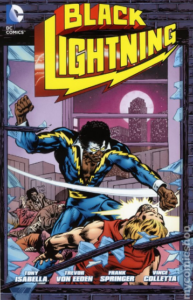

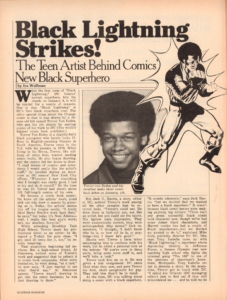
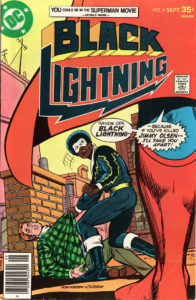
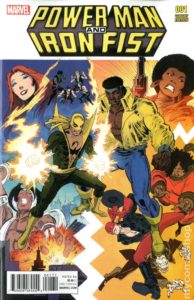
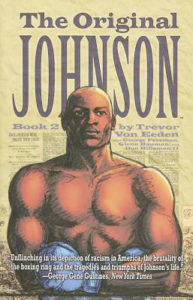
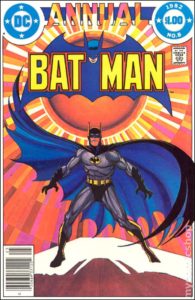
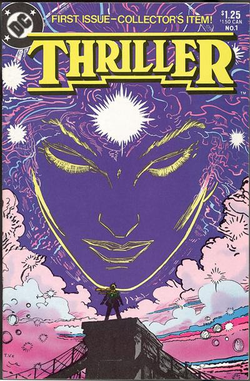
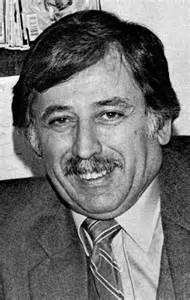
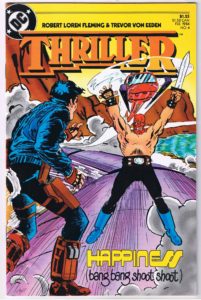
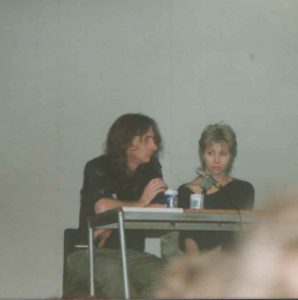
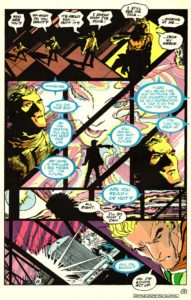
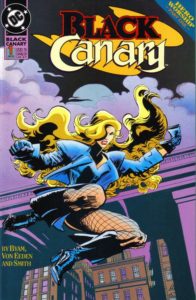
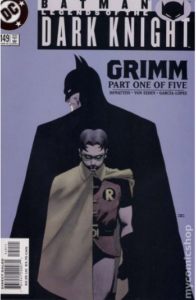
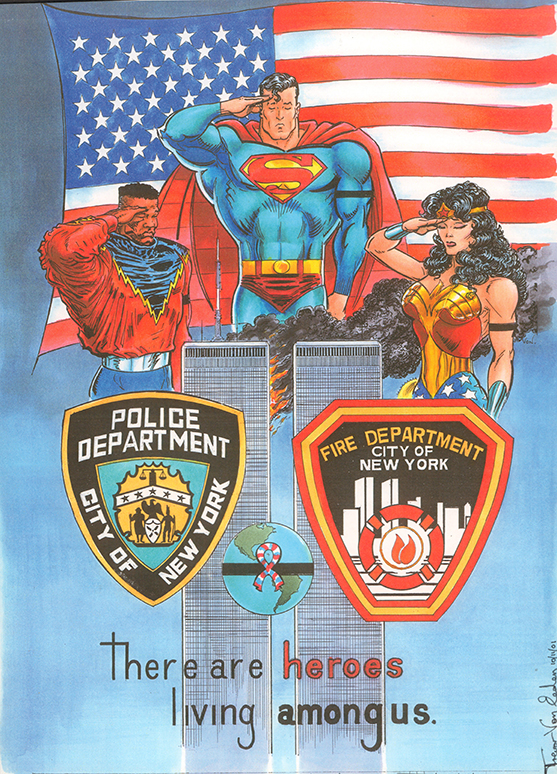
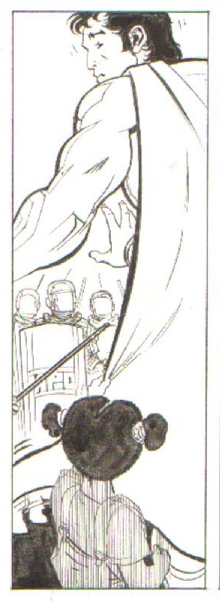
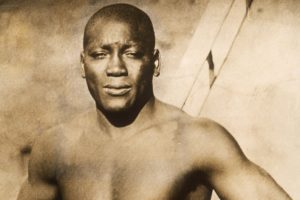

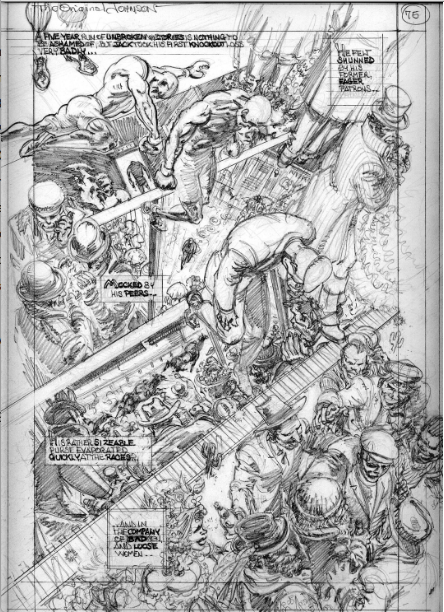
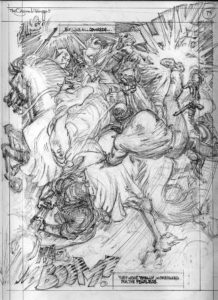
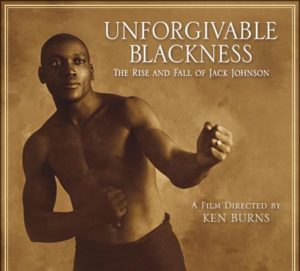
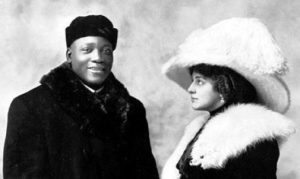
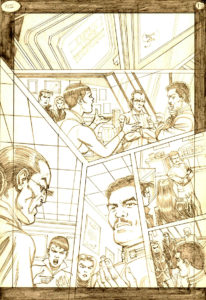


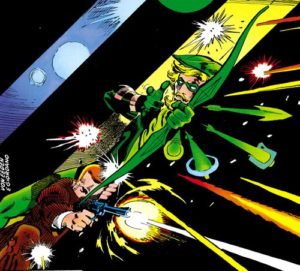
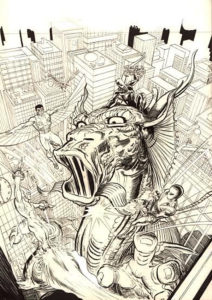

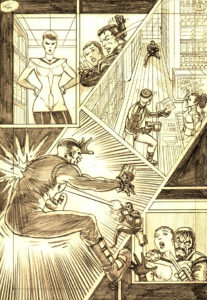
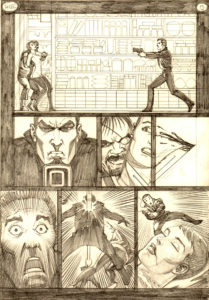
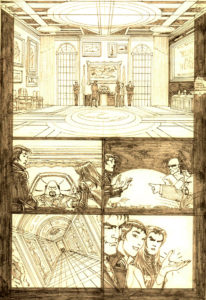
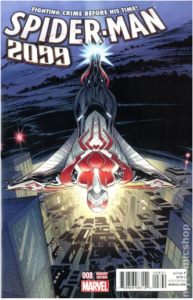
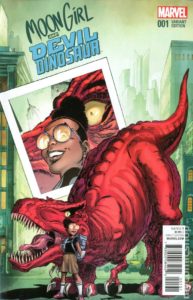
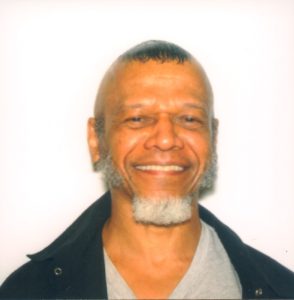
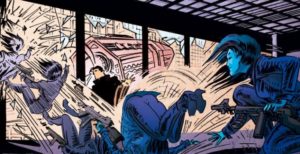
Trevor,
I was born in ’66, and I grew up in Chicago as a big DC fan. I was also a big fan of yours. I think I discovered you with stories in World’s Finest (I had just missed Black Lightning after the DC Implosion). But your Batman Annual was a BIG DEAL for me. I read it over and over, marveling over the artwork. I loved the Green Arrow mini you did (inked by Dick Giordano, if I remember correctly). And I read every issue you did of Thriller. Amazing stuff. The list goes on and on. So let me say, thank you.
I jumped in this article and I got to the point where you described your relationship with Lynn and I just can’t remember a person ever being so honest and raw about their life. I’m floored. I had to stop and just reach out to you and again say, thank you.
I will finish reading your story and I will get caught up on your work. I’m glad you’re here. I’m glad you told this.
Thanks,
Carl
Trevor is simply too good (and far too evolved) for comics. Fantastic interview. I’ve always felt that his work was a concentration of the finest qualities of Eisner and Adams, mixed with something the medium had never seen before; and that Miller, Simonson and Chaykin all picked up a thing or three from Trevor’s storytelling along the way. I really dig comics history, and there were loads of gems in this article that were new to me, so thank yous all around.
Someday I want to see a cable TV mini adapting Johnson, with Trevor scoring a co-Executive Producer credit. Maybe borrow the sets and costumes from HBO’s abandoned Carnivale. Johnson may be his third favorite from his own catalogue, but it was always my top favorite effort from him.
But Trevor, if you’re reading this comment, I am thrilled to have verified my suspicion that Rand had some impact on your mind. And I am hurt to read that you felt like you received little attention from fandom in your years of service. Never for a New Yawk minute ever feel that your millions of hours of labor went unnoticed. My silly anecdote: I was once briefly considered to assist the great Mike Grell. He said I would need to learn to draw more in keeping with his style. I told him that I’d rather try to learn to draw like you. He said there was only one Von Eeden.
Cheers.
I had no idea Trevor is just a few years older than me. As a kid, I loved his Black Lightning and Batman Annual 8. When he took over the covers from Rich Buckler, it was amazing. His Original Johnson pages look incredible.
(Trevor, the incident with the chair sounds really annoying — it’s the type of prank 8th grade boys might pull.)
Dave
I wish Trevor had worked with Curt Swan on Superman. Their figure work was similar, but Trevor’s layouts were always so dynamic, and Curt’s (except when working from Infantino or Kubert roughs) were often static.